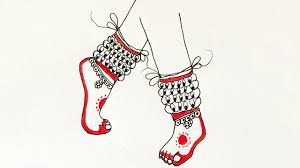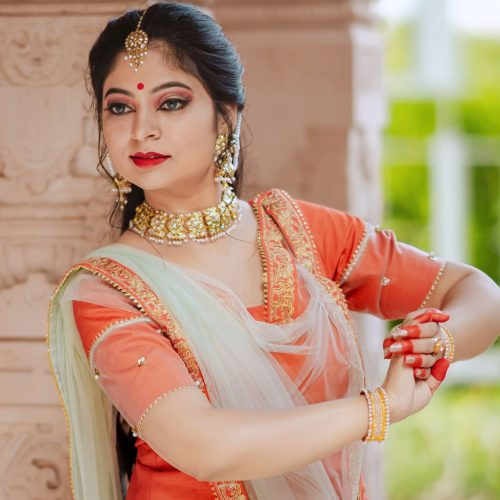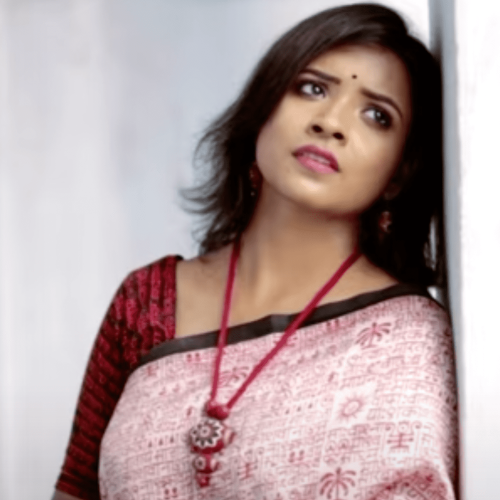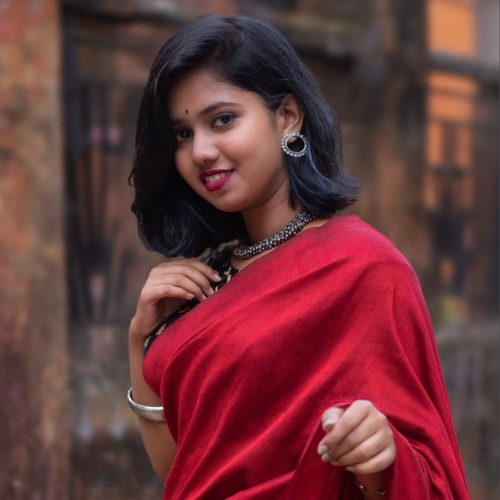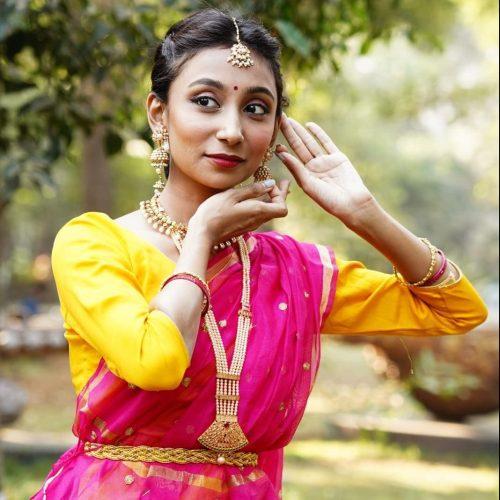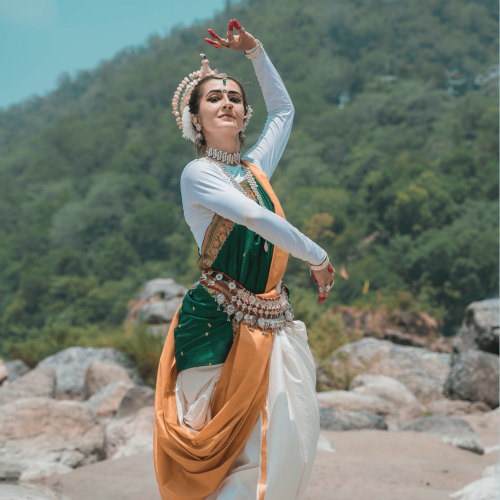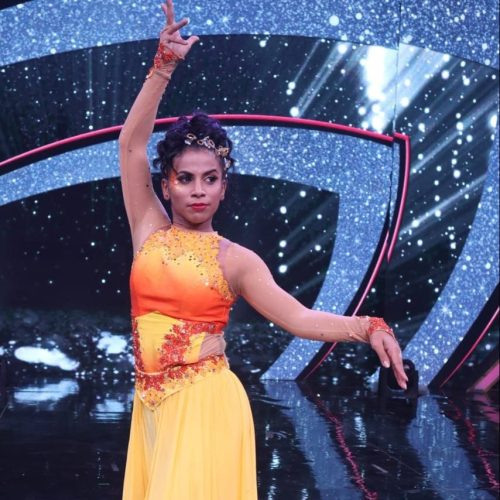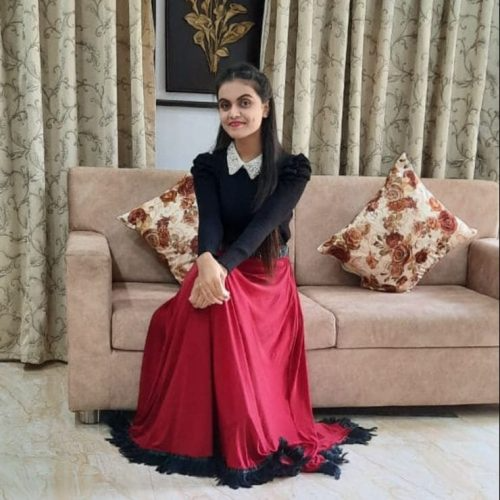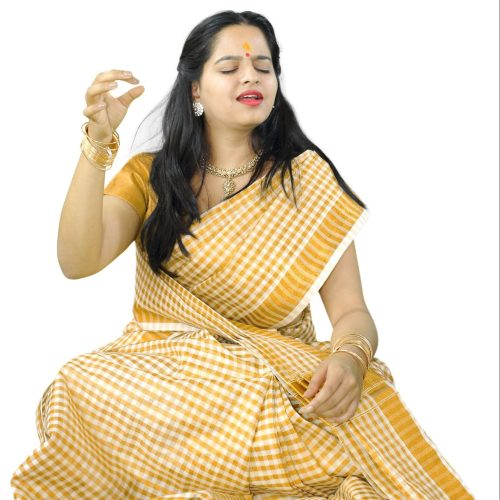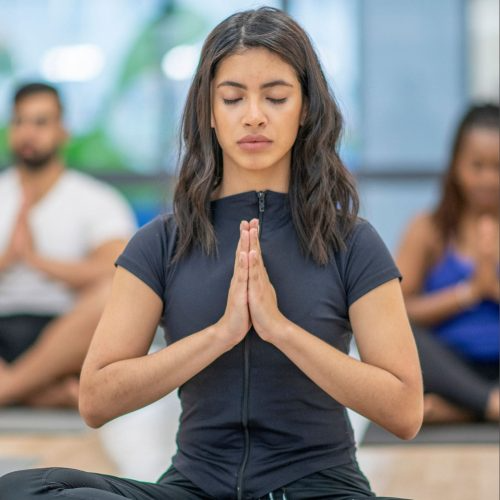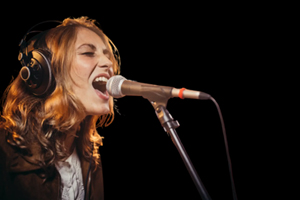The Art of Attire: A Guide to Kathak Dress
- October 3, 2024
Introduction To Kathak
Kathak is one of the major classical dances of India. An orchestration of complex footwork patterns and intricate movements, it works in tandem with hundreds of ankle bells. It originated in the northern regions of India, particularly in the states of Uttar Pradesh and Rajasthan. Kathak has ties back to the Hindu and Muslim cultures.
Kathak: an Art of Storytelling
“Kathaa kahe so kathak” (that which tells a story is Kathak). The word Kathak is derived from the Sanskrit word “Katha,” which means a story. Kathak is a storytelling art form with the story narrated while dancing, with legends and mythological stories told through Kathak revolving around the life of Krishna and other deities.
History of Kathak
Traditionally performed in temples, Kathak was brought to the court and patronised by the emperor in the Mughal period. However, popularity of Kathak declined during the British Era due to the British support for the propagation of Christianity. Over the years, Kathak has diversified into three main Gharanas: Jaipur, Lucknow, and Banaras. All the Gharanas have different styles but share common elements of grace, storytelling, and rhythm.
Kathak performances are choreographed to Hindustani Classical music, accompanied by instruments such as Tabla, Harmonium, Sarangi, Flute, etc.
Exploring the Elegance of a Kathak Dress
Importance of Kathak Outfits
Kathak is made up of its intricate steps, deep expressions, fluid hand gestures, exquisite jewelry, and carefully formulated attire. Kathak dance dresses are an integral part of what makes Kathak such an engaging art form. They elevate the storytelling within the performance and enrapt the audience. These Kathak dresses, when combined with traditional jewelry, not only represent the rich cultural legacy of India but also enhance the grace of the dance. The vibrant colors and flowy fabric make this art of storytelling real and entertaining, maintaining the legacy of the traditional Indian dance, Kathak.
All about the Kathak Outfit:
Kathak dance dresses with their flowing textiles and elaborate decorations are crucial in heightening the visual appeal for the audience. They convey narratives using the intricacies of design and detail. Kathak dance outfits enhance the grace and beauty of the dance while also showcasing India’s rich culture. They give the performance significance and novice. The vibrant colours and traditional patterns of the anarkali and that of the male dresses make them a vital component of the dance.
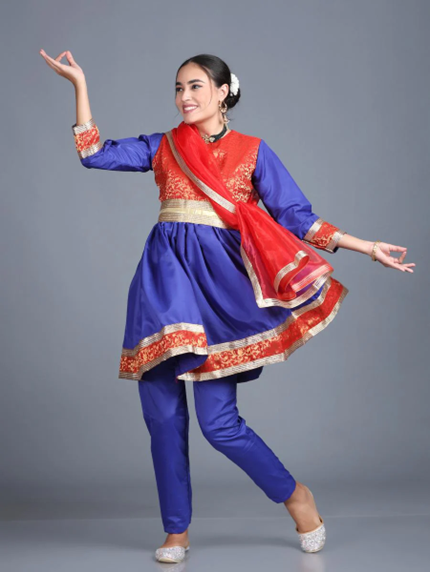
1) Female Kathak Dance Dresses
The garments worn by Kathak artists are different and have origins in either the Muslim or the Hindu culture. There are two types of Hindu Kathak dresses for female dancers.
a) The Saree
Saree draping, worn in a style different from the customary style that goes over the left shoulder. A Kathak dancer generally wraps the ‘orhni or chunari’ around the waist upon a long flowing skirt known as the ‘ghagra’, and it hangs down over the right shoulder. The upper body is covered with a tightly fitting blouse called a ‘Choli’.
b)The Anarkali Dress
The second variation of Kathak dress, worn by Hindu Kathak dancers, is an Anarkali dress, a long, flaired kurta just about the ankle. The flair typically has an embroidered border, drawing attention to the dance motions, especially the ‘chakkars’. The dancer’s head and the anarkali dress for Kathak are covered with the translucent ‘orhni’. The distinct element of the second variant is jewellery.
c) Muslim Kathak Dress
The Kathak dresses for Muslim culture also consist of form-fitting churidar pajamas and, on occasion, a lengthy coat that covers the hands and upper torso. There is a scarf covering the head, and the jewellery is comparatively light.
2) The Male Kathak Dress
a. Kurta Churidar
The Mughal Kathak dress for male performers is a ‘kurta churidar’. The kurta can be simple or cut as an angarkha (having a tie knot on the shoulder). There is also the possibility of adapting the angarkha or kurta for dance to incorporate a wider, layered flare in the lower portion.
3) Fabric and Color Choices
Some common fabrics used for Kathak costumes include silk, which is luxurious yet lightweight and moves fluidly with the dancer. Chiffon, which is sheer but fluid; Velvet which is royal and is used for jackets or blouses and Cotton, which is breathable and comfortable.
The right choice of costume fabrics enhances that dancer’s grace and movements, highlighting intricate footwork and spins.
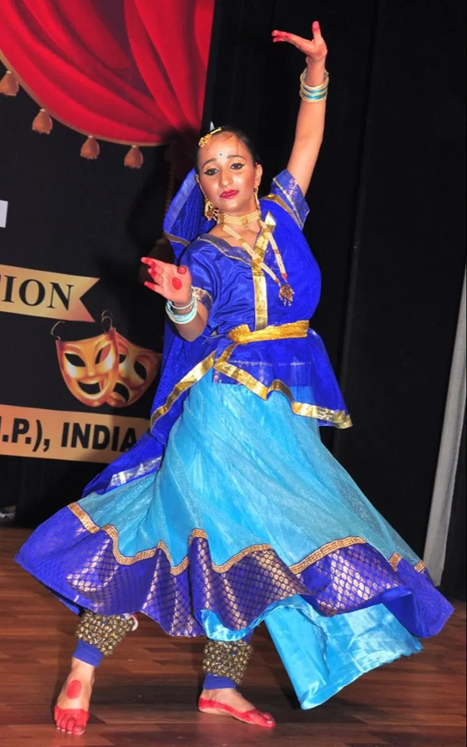
4) Kathak Jewelry
b) Ghungroo in Kathak Dress
The dancers movements are teamed up with a rhythmic sound produced by the ghungroo. A long necklace, for example, long pearl rosaries, paired with light-weight earrings, rings, bangles, or bracelets in hands are part of the complete Kathak costume. A broad and intricately designed waist belt (Kamarband) is tied around the waist of the female dancer. It helps in holding the dupatta of the Anarkali dress for Kathak and the long braid of the dancer. It is also essential in providing support to the back and helps in free movement. A ‘Maang tikka’ or bindi in the middle of the forehead is typical of a Kathak dancer. Some dancers also wear a side maang tikka (jhumar) with their anarkali dress for performing Kathak.
5) Kathak Makeup
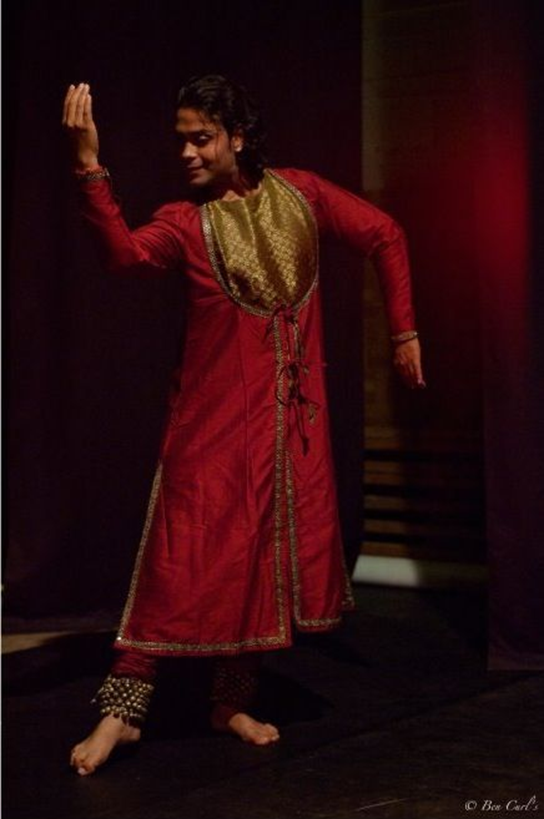
In the case of makeup, a beauty dot placed on the forehead and heavy makeup for the eyes, lined with kajal and eyeliner, are expected. An aalta (red dye) put on the palms and feet of the dancer helps further manifest several mudras made by the hands and legs. This helps in making the mudras exclusive and increases the visual impact of the dance.
A hair bun placed at the center of the head is adorned with a gajra. Additional ornaments are also used to embellish the bun, typically consisting of ‘parandi’ (a three-threaded hair extension, typically a braid).
6) Modern Trends
The costumes in the past were sarees, influenced by Hindu traditions, but later transformed into Anarkali suits, pajamas, and lehenga cholis, due to the influence of Persian culture.
With the coming of contemporary ideas, there are some minor changes in Kathak costume, including changes in the design of the long jacket and the dupatta, as preferred by the dancers to be a combination of style, sophistication, and elegance.
7) Tips for choosing the right Kathak dress
- Prefer costumes that fit your particular body type and suit your height.
- Costumes with breathable and comfortable fabrics are to be chosen.
- The costume should allow a full range of motions, especially for arms and legs.
- Specific fabrics, such as cotton for practice silk or georgette for performances, are to be used.
- A well-fitted costume supports fluid movement and prevents distraction, increasing confidence and accentuating movement.
Hence, comfort, confidence, and optimal performance are to be kept in mind while choosing the right Kathak costume.
8) Care and Maintenance
Proper care of the costumes of Kathak is essential to maintaining their quality and longevity.
The instructions specified on the care label for specific washing and maintenance are to be followed.
Gentle washing of the outfit must be carried out whenever applicable, using mild detergent and hand washing.
Proper drying, ironing, and steaming of the costumes with a low heat setting on the iron is to be maintained.
Proper storage in a dry place with breathable bags as covers for the costume is to be managed.
Conclusion
Both the men and women wear the Kathak dresses in a way that reflects some of their own personalities and preferences. At times, the dresses are based on the theme of the dance. Numerous dancers even alter some part of their dresses, such as the men who at times wear long kurtas over their lehengas or female dancers who dance without the scarf or orhni covering their anarkali dress. Some time up the dupatta in a different fashion, while others choose to tie it to their waist for better posture.
I hope you have learnt everything about Kathak Costumes through this blog. To learn more about the rich history and intricate designs of Kathak costumes, dive into our expert sessions and informative blogs!
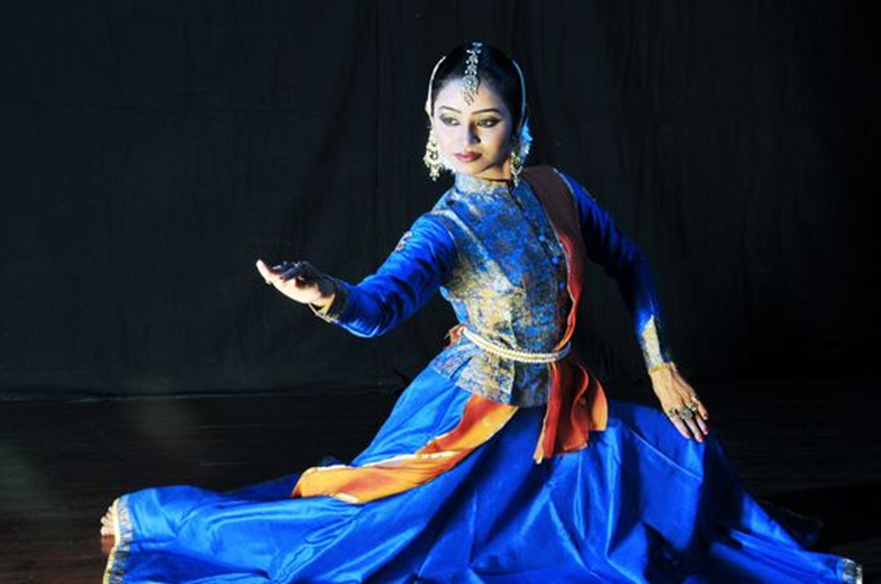
FAQs
The traditional Kathak costume for women usually consists of an Anarkali (a long, flared frock) paired with a churidar (tight-fitting pants) or lehenga (long skirt), and a dupatta (scarf). The costume is typically made of lightweight fabrics like silk, georgette, or cotton and is embellished with intricate embroidery or mirror work.
Male Kathak dancers wear a traditional kurta and churidar or a dhoti with an angarkha (a long, flowing top). The costume for men is simpler but still elegant, often made with comfortable, flowing fabrics to allow for ease of movement during the performance.
Jewelry plays an essential role in Kathak costumes. Female dancers often wear heavy traditional jewelry, such as jhumkas (earrings), maang tikka (forehead ornament), kamarbandh (waist belt), and bangles. Anklets or ghungroos (bells) are a vital accessory, highlighting the intricate footwork in Kathak.
Ghungroos are small metallic bells tied around the ankles of Kathak dancers. They are crucial for accentuating the footwork, an essential element in Kathak performances. The sound of the ghungroos enhances the rhythm and helps the audience appreciate the complexity of the dancer’s movements.
While the basic structure of Kathak costumes remains the same, there can be regional variations in terms of fabric, colors, and design. For example, in Northern India, costumes may feature rich, bright fabrics like silk, while in other regions, lighter, more subtle fabrics and colors are preferred.
The dupatta is often draped across the shoulders or head and can be used as a prop during the dance to convey emotions, enhance movements, or add an additional layer of grace to the performance.
Related Blogs
- All Posts
- Kathak
